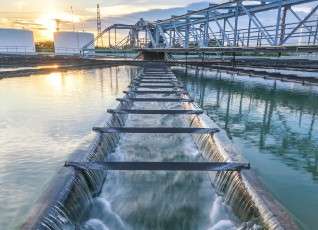From Source to Tap: Navigating Building Water Quality

Water traveling from municipal sources to a building’s taps undergoes a complex journey influenced by everything from the quality of the source water to the building’s internal distribution network. Even water that meets national safety standards can encounter challenges as it passes through aging pipes, is affected by shifting climates, and interacts with building infrastructure. Understanding these factors—and taking proactive steps to address them—is essential for ensuring safe, reliable, and sustainable water. Understanding source water quality The foundation of safe drinking water in the U.S. is the Safe Drinking Water Act (SDWA), which mandates the EPA to set health-based standards for public water supplies. While compliance with SDWA ensures water is safe to consume, it doesn’t guarantee that water entering a building’s plumbing system is free of all contaminants or pathogens. Once water leaves the municipal water treatment plant and enters the distribution system, the quality of the water can change drastically before it reaches a building, leaving building water systems susceptible to issues like scale, corrosion, and even microbial growth. Growing challenges influencing source water quality Leveraging water quality reports Consumer Confidence Reports (CCRs) are annual water quality reports issued by municipalities to inform consumers about the safety and quality of their drinking water. By reviewing these reports, engineers and facility managers can anticipate challenges such as scaling, corrosion, or bacterial growth and adjust water treatment protocols accordingly. How source water quality impacts buildings Solutions for optimal water quality To mitigate risks and ensure high-quality water throughout building systems, you must adopt proactive and multi-faceted strategies. Here are some proven solutions: 1. Supplemental disinfection systems: Installing secondary disinfection systems can help control microbial growth beyond the municipal supply. Options like UV disinfection can target pathogens like Legionella without contributing to harmful DBPs or accelerating corrosion. 2. Flushing programs: Regular flushing of plumbing systems removes stagnant water, sediment, and biofilm. A well-designed flushing program includes low-use fixtures, distal outlets, and hot water recirculation loops to prevent microbial growth and ensure disinfectant efficacy. 3. Sediment filtration: Point-of-entry sediment filtration systems capture particulates and sediment before they enter the building’s plumbing, reducing strain on equipment, minimizing scale formation, and improving water clarity. 4. Water softeners: By reducing hardness, softeners prevent scaling and improve the efficiency of water-dependent systems. This is particularly critical in areas with high sediment or hard water. 5. Smart monitoring: Modern IoT-enabled sensors can provide real-time insights into water quality metrics such as temperature, pH, chlorine residuals, and microbial activity. Automated alerts enable facility teams to respond quickly to emerging issues. Standards, best practices, and emerging trends Standards and best practices Several modern guidelines provide a framework for water quality management: Emerging trends Making water quality a strategic priority Water quality is not just a technical challenge—it’s a strategic priority. Poor water quality can compromise building performance, increase operational costs, and endanger occupant health. By leveraging tools like CCRs, adhering to best practices, and investing in advanced water management solutions, you can ensure that your water systems deliver safe, efficient, and sustainable water. Partner with LiquiTech to lead the way in advanced water intelligence. Together, we can transform your building’s water systems. Contact us today to get started.